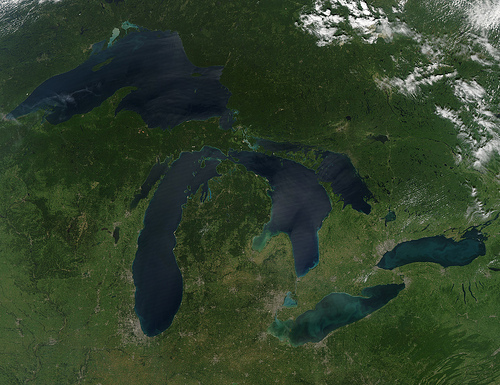Efforts to Identify Harmful Chemicals in Great Lakes FAR Behind Schedule
U.S. and Canada have only eight chemicals on the list of “Chemicals of Mutual Concern”; thousands still not evaluated

Algae blooms in Lake Erie can be a problem for boaters and municipal water systems, but scientists say other chemicals may be even more serious. The Great Lakes Water Quality Agreement, originally signed in 1972 by the U-S and Canada, has helped lower levels of some chemicals already found in the Great Lakes. And a 2016 law provides more oversight of chemicals by the EPA., but, scientists say both countries are falling short of the accord’s intended effectiveness. Mike Mezzacapo is a Sea Grant Fellow with the International Joint Commission, which monitors the progress of the agreement. He says with 2,000+ new chemicals added to the market each year, the U-S is decades behind in its efforts to evaluate potentially harmful substances, while Canada is pressing forward.
“In Canada they have been fairly speedy, about 23,000 chemicals in commercial use over the past three decades there, and they have identified about 4300 substances which will require additional testing. They hope to evaluate those by 2020” -Mike Mezzacapo, IJC Sea Grant Fellow
The Great Lakes Water Quality Agreement presses the U.S. and Canada to compose a list of “Chemicals of Mutual Concern” that pose a threat to human health and the environment. Mezzacapo says so far, that list includes just eight substances.
To hear the entire conversation between Mike Mezzacapo and WDET’s Amy Miller, click on the audio link above
